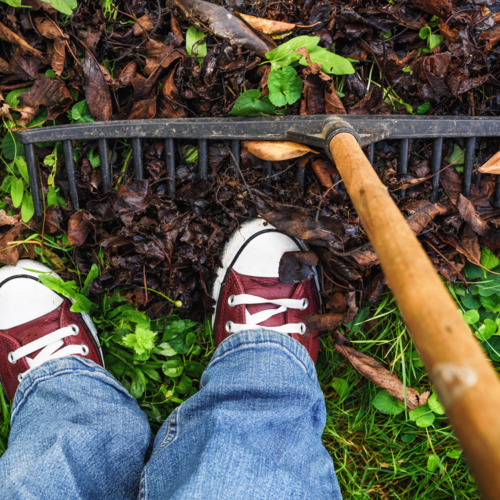Depending on where you live, you might be faced with drastic seasonal changes. One day it could be a beautiful fall day and the next you could be buried under what feels like a hundred feet of snow! That’s why it’s always a good idea to get a good head start on your outdoor to-do list! Not only will you feel great getting things done ahead of time, but your spring self will thank you for turning a messy task into an exciting fresh start on a clean canvas!
October Checklist
Before looking at what needs to be done in November, let’s make sure we’re caught up with our October to-do’s. Here is a quick checklist for you to make sure that your garden is ready to take on November.
| Remove pond netting and clean the bottom of the pond after the leaves have fallen. | |
| Prune out all dead, diseased, and dying branches and leaves off shrubs and trees. | |
| The best selection of fall bulbs is available now. Be sure to plan out your garden ahead of your visit to make sure you have the right growing conditions for your bulb choices. | |
| Lower the blade on your lawn mower to keep grass cut shorter for fall. Keeping your lawn shorter in fall will prevent fungus like snow mold from forming in the spring. | |
| Start taking fuchsias and geranium cuttings. This will allow your plants to become dormant during the winter, saving their energy for Spring. | |
| Apply dolomite lime to prevent the soil from becoming too acid over the winter months. If the PH level is too high, your grass won’t be able to absorb nutrients properly. | |
| Begin storing onions, carrots and beets in dry peat moss or “Beats Peat” to absorb excess moisture and keep them well insulated. This will also prevent small rodents like mice from getting to them. | |
| Plant fall bulbs and fall perennials now, for beautiful spring blooms! | |
| Use gypsum lime and organic compost in heavy clay areas to change into workable soil. | |
| Apply Fall & Winter lawn fertilizer 6-10-20. For the best results, be sure to apply your fertilizer earlier in the month, between October 1st-15th. |
November Checklist
No two gardens are alike. Which means you’re welcome to pick and choose what applies to you when it comes to transitioning your garden from fall to winter. We know that November isn’t the most exciting month for Gardeners because It’s a lot of prepping, storing, and tidying up. But, if you’re like us and don’t like wasting time when the weather is nice. It’s the perfect opportunity to give you a head start when spring comes. Here’s how we plan on getting a good start to our spring gardens.
| Divide overgrown perennials and replant. No room? They make a good Christmas present in a pot for a gardening friend (make sure to tag them). | |
| If you run your pond pump during the winter, raise it on to a ledge in the pond to recirculate only the top layer of water. | |
| Start paper whites and other indoor forcing bulbs for Christmas color. They need approximately seven weeks to bloom. | |
| Plant evergreens, perennials, containerized fruit & shade trees. | |
| All your bulbs should be dusted with sulfur or bulb dust prior to storing them away. | |
| Prune back Rose of Sharon and P.G. hydrangeas. Tidy up perennials. | |
| Construct a comport bin and create your own organic rich soil with garden refuse and leaves. Use Rot-it to quicken the process. | |
| There’s still time to apply dolomite lime to your lawn. | |
| Tie up cypress and globe cedar trees so heavy snows will not destroy their shape. |
Once you’re finished outside, bring your gardening indoors! A great way to garden indoors is by sowing seeds to create your very own starters. November is also a great time to get indoor plants on sale, as they can’t be shipped during cold months. Herb gardens are a key staple in many homes during the winter months and produce herbs quickly. Or, as Gord suggest below you could try forcing indoor bulbs to for beautiful indoor color during cold, gloomy months.


